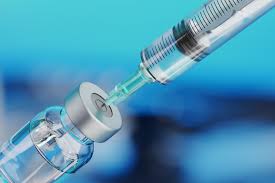Emergency vaccination campaigns have slashed deaths from major infectious disease outbreaks by nearly 60 per cent since 2000, a new study has shown.
The study, conducted by Gavi, the Vaccine Alliance, in collaboration with Australia’s Burnet Institute, analysed 210 outbreaks across 49 low-income countries over a 23-year period.
It found that rapid vaccine deployment during outbreaks of cholera, Ebola, measles, meningitis and yellow fever, had led to estimated reductions in illnesses and deaths of nearly 60 per cent on average.
For diseases like yellow fever and Ebola, the impact was even more dramatic, according to the study published in the authoritative British Medical Journal (BMJ) Global Health.
The study found that yellow fever deaths dropped by 99 per cent, while Ebola fatalities fell by 76 per cent.
The study’s authors say this figure is likely a conservative estimate, as it does not include the broader social and macroeconomic impacts of major outbreaks.
For example, the 2014 Ebola outbreak in West Africa, which occurred before an approved vaccine was available, cost the region an estimated 53 billion dollars.
In contrast, later outbreaks responded to with emergency vaccines saw deaths reduced by three-quarters and the threat of regional spread dramatically lowered.
The study provides a breakdown of vaccine effectiveness by disease.
Measles, one of the most infectious viruses known, saw cases drop by 59 per cent and deaths by 52 per cent thanks to outbreak response campaigns.
Yellow fever saw the biggest gains, with emergency vaccination nearly eliminating deaths, a 99 per cent drop.
Cholera and meningitis, which often strike communities with limited healthcare access and infrastructure, saw more modest but still meaningful reductions in cases and deaths.
Vaccinations helped reduce cholera cases and deaths by 28 per cent and 36 per cent, respectively, across 40 cholera outbreaks between 2011 and 2023.
For meningitis, cases and deaths fell by 27 per cent and 28 per cent respectively, over 10 years.
The results highlighted not only the effectiveness of emergency vaccination, but also the critical role of preparedness and speed in response to emerging threats.
“For the first time, we are able to comprehensively quantify the benefit, in human and economic terms, of deploying vaccines against outbreaks of some of the deadliest infectious diseases,” Sania Nishtar, CEO of Gavi, said.
“This study demonstrates clearly the power of vaccines as a cost-effective countermeasure to the increasing risk the world faces from outbreaks.”
Gavi, the Vaccine Alliance, is a unique global partnership that helps vaccinate nearly half the world’s children against deadly and debilitating diseases.
It brings together developing country and donor governments, the World Health Organisation (WHO), UN Children’s Fund (UNICEF), the World Bank, the Bill & Melinda Gates Foundation and other key partners to expand access to immunisation.
Gavi also maintains global vaccine stockpiles for major diseases, managed in coordination with WHO, UNICEF, Médecins Sans Frontières (MSF), and the International Federation of Red Cross and Red Crescent Societies (IFRC).
In addition to reducing deaths and disability-adjusted life years, emergency vaccination during the 210 outbreaks studied generated nearly 32 billion dollars in economic benefits, from averting premature deaths and years of life lost to disability.
The Gavi study emphasised that emergency vaccination must be paired with strong routine immunisation systems to prevent future outbreaks.
The coronavirus (COVID-19) pandemic was a stark reminder of the value of vaccines, which saved an estimated 20 million lives globally in the first year of rollout alone, according to the respected and influential Lancet medical journal.
Yet the pandemic also disrupted routine immunisation, leading to dangerous backsliding in coverage rates for diseases like measles and polio.
Looking ahead, Gavi’s 2026-2030 strategy includes expanding stockpiles, accelerating vaccine access for diseases like mpox and hepatitis E, and supporting preventive campaigns in high-risk regions. (NAN)


